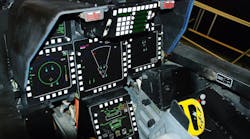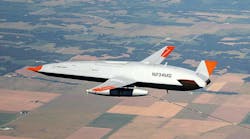Northrop Grumman announced this week that company experts developed two high-performance monolithic microwave integrated circuit (MMIC) broadband ultra-low-noise amplifiers that are in production for immediate delivery for commercial, aerospace, and defense applications.
The indium phosphide (InP) high electron mobility transistor (HEMT) amplifiers considerably reduce footprint size and exhibit strong ultra-low-noise performance and high gain, company officials say.
"The amplifiers are the initial release of products designed with the company's indium phosphide process," which traditionally has been for aerospace and defense applications, says Frank Kropschot, general manager of microelectronics products and services at Northrop Grumman.
The products were developed at the company's 1 Space Park campus in Redondo Beach, Calif., which has a rich heritage at TRW, which developed advanced digital and RF & microwave integrated circuits for space, aviation, and military applications. Northrop Grumman acquired TRW in 2002.
"For the first time, Northrop-Grumman is offering products for similarly demanding commercial applications," Kropschot says.
Related: Hittite Microwave to license Northrop Grumman's line of MMIC devices
The Northrop Grumman ALP283 is a W-band 1.7-millimeter 2 InP HEMT low-noise amplifier that operates between 80 and 100 GHz. It provides 29 dB of linear gain, 2.5 dB typical noise figure, and 1 dB gain compression power (P1dB) of 3 dBm (2 mw).
The device offers a 2 dB typical average noise figure from 80-100 GHz, and is for W-Band millimeter-wave imaging applications, sensors, and communication links.
The ALP275, meanwhile, is W-band 2.125-millimeter 2 InP HEMT ultra-low-noise amplifier that operates between 71 and 96 GHz. It provides greater than 26 dB of linear gain, 3 dB typical Noise Figure and P1dB of 4 dBm (2.5 mw), and is for E-Band and W-Band communications links.
Both amplifiers are passivated to ensure rugged and reliable operation, company officials say. the bond pad and backside metallization of the devices are titanium gold, which is compatible with conventional die attach, thermocompression, and thermosonic wire bonding assembly techniques.
Northrop Grumman manufactures the amplifiers at its microelectronics wafer fabrication facility. A Department of Defense Trusted Foundry, the facility uses advanced gallium nitride, gallium arsenide, and indium phosphide semiconductor manufacturing processes.
For more information contact Northrop Grumman online at www.northropgrumman.com/mps.



